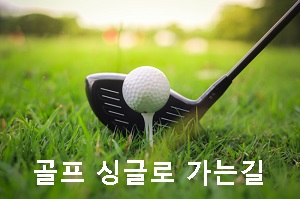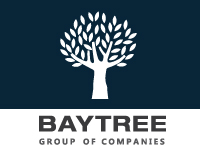CA
ON
골프 싱글로 가는길
전화: 647-291-2020
115 York Blvd Richmond Hill Toronto, ON

부동산캐나다 (Korean Real Estate Post)
전화: 416-449-5552
1995 Leslie Street Toronto, ON
.jfif)
럭키 여행사
전화: 416-938-8323
4699 keele st.suite 218 toronto Ontario M3J 2N8 toronto, ON

준비된 바이어 그룹 , BAYTREE 이너써클
전화: 416-226-5999
7030 Woodbine Ave. Suite 103 Toronto, ON

한인 시니어 탁구협회
전화: 647-209-8933
1100 Petrolia Rd Toronto, ON
4.jpg)
고려 오창우 한의원
전화: 416-226-2624
77 Finch Ave W #302, North York Toronto, ON

1004열쇠
전화: 416-895-1004
4 Blakeley Rd. Toronto, ON

토론토 기쁨이 충만한 교회
전화: 416-663-9191
1100 Petrolia Rd Toronto, ON

행복부동산 -수잔정 Home Standards Brickstone Real
전화: 647-866-7878
180 Steeles Ave W Unit 30, Thornhill, ON

캐나다 공인 컨설턴트 - 한인크레딧 컨설팅
전화: 416-897-8438
1 High Meadow Place, Unit 2 North York, ON

한인을 위한 KOREAN JOB BANK
전화: 6476245886
4065 Chesswood Drive Toronto, ON
.jpg)
토론토 민박 전문집
전화: 416-802-5560
Steeles & Bathurst ( Yonge) Toronto, ON

멋진스윙.. 장타를 원하십니까? 오랜경력의 윤프로가 확실하게 책임지도 해드립니다. 647.291.2022
블로그 ( 오늘 방문자 수: 8,280 전체: 15,272,808 )
Golf has become the most beloved presidential pastime Sep. 1
lucasyun
2005-09-20
Golf has become the most beloved presidential pastime Sep. 16, 2005
By Don Van Natta, Jr.
Special to PGATOUR.com
Every golfer finds the first tee irresistible, a pristine green launching pad of limitless possibilities. It is easy, standing on the first tee, to envision your ball splitting every fairway and tucking into every green.
But if you are a golf-crazed American president, the first tee looks more like an escape hatch. Once he steps on to the first tee, the American president leaves the chaos of his fish-bowl life behind -- the public, the press, the pundits. None of them are invited to tag along, and the president won’t have to confront any of them again until the 18th green.
This explains why the biggest smile you’ll see on a president’s face is the morning after his election victory, and any morning he’s taking practice swings on the first tee. Even if he deposits his first shot deep in the woods, the president keeps grinning as he heads down the fairway and -- hopefully -- briefly leaves the burdens of his office behind. Golf offers an American president a very rare privilege -- the chance to be alone, in public, for a few blissful hours, with nothing to worry about but his game.
Bill Clinton told me the most important reason he adores the game is because it takes time to play (a lot of time, in Clinton’s case -- an average of six hours for 18 holes).
“Most presidents lead busy, crowded, packed lives,” he explained. “They don’t get to go outside. They don’t have time to go out to Wyoming and ride horses every day. They don’t have time to walk in the Adirondack Mountains every day. So you are outside, you are in trees, you are in beautiful surroundings. And it takes time. One of the reasons I always liked golf is because the rest of my life is going at breakneck speed and everything had to be done fast and this is the place where I had to slow down.”
Dwight D. Eisenhower relished those few hours where his only chore was focusing on “that ball,” testing ways to safely land it over a sand trap or attempting to sink it from nine feet away to save bogey. To play even modestly well, a president must forget everything except those things his pro taught him. “You literally can’t think about anything else -- if you do, you can’t hit a shot,” Clinton said with a laugh.
In the past century, only three of 17 American presidents chose not to play the game. Golf has become the most beloved presidential pastime, a fact that no longer seems to bother most Americans.
But it wasn’t always this way. More than a few presidents hit the links when it seemed inappropriate to play. After pardoning Richard Nixon, a decision that astonished millions of Americans, Gerald Ford’s first public act was to flee Washington and play Pinehurst No. 2 with Arnold Palmer, Jack Nicklaus and Gary Player during the World Golf Hall of Fame’s inaugural inductions.
Some presidents played the way they wanted to play, despite the laws of the land. Warren Harding never let Prohibition keep him from sipping his Scotch-and-sodas on the back nine. And other presidents never let the elements stop them. Woodrow Wilson played with balls painted red so they would be easy to see on snow-covered courses.
Facing impeachment by a hostile Congress in October 1998, Clinton finished the last few holes of a round at the Army-Navy Club, in the dark, as the rain poured, all alone. More than one pundit thought the symbolism was just too delicious to ignore, but the golf-crazed among Clinton’s constituents just nodded. They understood.
A few men risked their presidential ambitions for the chance to chase the little white ball, testing the conventional wisdom at the time that lurking among the bunkers was enough political peril to keep a man out of the White House.
Theodore Roosevelt declared that “golf was fatal” to any man with aspirations to become president. Roosevelt issued that warning to William Howard Taft, his 350-pound successor who looked downright silly playing the game. None of that mattered to Taft, who rejected his political mentor’s advice and became America’s first golf-mad chief executive. Taft was so infatuated with the game that he struggled to keep his workday commitments. When a tee time was threatened by a long-scheduled White House meeting with a Chilean diplomat, Taft bellowed, “I’ll be damned if I’m going to give up my golf game to see this fellow!”
John F. Kennedy, the finest of the presidential golfers, nearly made a hole-in-one at the beautiful Cypress Point Golf Club just months before the 1960 presidential election. As his perfect 6-iron shot rolled directly toward the cup, Kennedy screamed for the ball to stay out of the hole. And it did, stopping just 6 inches shy of the cup. Kennedy breathed a loud sigh of relief, telling his friend, Red Fay, “If that ball had gone into that hole, in less than an hour the word would be out to the nation that another golfer was trying to get into the White House.”
President George Herbert Walker Bush, left, and Mark O"Meara share a laugh at the 1996 Presidents Cup. (WireImage)
Kennedy did not want to be like Ike, his predecessor and the man he criticized for his golf obsession. No one more embodied the image of the golfing chief executive than Eisenhower. Ike played the game so often during his eight years in the Oval Office that many Democrats -- Kennedy included -- joked that the old general had invented the 36-hole work week. And the quip was literally true: Eisenhower played a round of 18 on Wednesday afternoons, and another on Saturday mornings, at Burning Tree Country Club, outside Washington, D.C. The greens’ fees were raised during both those times to keep the fairways clear for the duffer-in-chief.
Kennedy kept his sharp game a secret from the American people; he didn’t want to be seen as a hypocrite for his whispers about Ike’s love of golf. Nixon, who was defeated narrowly by JFK in 1960, resented the fact that his political nemesis managed to get away with it, telling the press corps that golf was JFK’s “secret vice.”
Like many ambitious young men, Nixon recognized that golf might prove to be a boon to his career. Because President Eisenhower adored the game, Vice President Nixon tried to play with his old boss. But Nixon’s game was a train wreck, and the experience was a disaster, worsened by the plain fact that Ike did not suffer double-bogeys gladly. “Herky-jerky” was the phrase most often used to describe Nixon’s swing. Not surprisingly, Tricky Dicky used a quick sidearm toss to rescue more than one ball from the woods when no one except Secret Service agents watched.
Clinton, too, had trouble resisting the urge to take a few liberties with the Rules of Golf. During my round with him at the Golf Club of Purchase (N.Y.) in August 2002, Clinton took 200 swings to card an 82. Clinton doesn’t take mulligans, golf’s notorious do-over shots. He takes Billigans -- a unique brand of do-over shot. Put simply, Clinton lavishes his gargantuan charm on playing partners, who gladly grant the former president second and third tee shots and 15-foot gimme putts.
There is only one father-son presidential golfing tandem -- George Herbert Walker Bush and our current president, George Walker Bush. In case anyone might have been confused about their places in the pantheon of the presidency, the elder Bush wore a black cap emblazoned with ‘41’ and his son wore a black cap with ‘43’ on July 6, 2001 at the quaint Cape Arundel Golf Club in Kennebunkport, Maine. The reporters congregated on the first tee somehow ignored this odd, obvious thing.
“Nobody is commenting on the birthday hat,” the current president, who turned 55 that day, finally said. “President 41 gave me the 43 hat.”
It was the first time that the new President Bush played a round with the elder President Bush, and friends were anxious to see if the golfing dynamic between them might change. But 41 still set the rules, and 41 still drove the golf cart. “Whether you are president or not, Dad always wins out,” said Ken Raynor, the club pro at Cape Arundel and a long-time friend of the Bush family. “Dad always comes first.”
Golf runs deep in the Bush family bloodlines; 41’s maternal grandfather, George Herbert Walker, served as president of the United States Golf Association in 1920. A single-digit handicapper, he also donated the Walker Cup, the trophy awarded to the winning team in the biennial matches between leading amateur golfers from the United States and Great Britain/Ireland. And 41’s father, Senator Prescott S. Bush of Connecticut, was a scratch golfer who served as president of the USGA in 1935.
Despite that grand tradition, the current Bushes play what they call “polo golf,” meaning they race around the course in a Loony Tunes-style rush to put the game out of its misery. The family land-speed record, for a foursome playing 18, is a remarkable one hour, 42 minutes. In recent years, 41’s game has gone in the tank, which he’ll quickly admit. And his sons, George W. and Jeb, Florida’s governor, enjoy teasing him about his decision to tee off from “the forward tees.”
“And I am getting a little tired of my sons saying, ‘Don’t trip on your skirt when you hit the next one, Betsy,’ ’’ George H.W. Bush told me. “Nasty comments like that as I stride to the forward tees. Not, please note, the ladies’ tees.”
The Bushes, and nearly all the other golf-playing presidents, refused to engage in power games in shady spots just off the cart paths; most chief executives used the golf course to escape the pressures of the Oval Office. Lyndon Baines Johnson was the exception. He played a few rounds only after it was suggested that he could use the Chevy Chase Club as another forum to browbeat recalcitrant senators to vote for the Civil Rights Act of 1964. Johnson may have loathed the game, but he still expected to win.
“One lesson you’d better learn if you want to be in politics,” LBJ said, “is that you never get out on a golf course and beat the president.”
Worries in the West Wing about golf’s gilded image have faded in the new century. Golf has become the people’s game, and it is no longer viewed by presidential hopefuls -- or the voters -- as a political liability. As the 2004 presidential election proved again, playing golf has even become something of a political asset. Every time a golfer runs against a non-golfer, the golfer wins -- with one exception: Jimmy Carter, a non-golfer, defeated President Gerald Ford, a devout hacker, in 1976. But Ronald Reagan, a lifelong golfer, made sure that Carter served just a single term. In fact, in the past two decades, the non-golfers among presidential nominees make up a losers’ roll: Al Gore, Bob Dole, Michael Dukakis and Walter Mondale. All these men are nongolfers who were defeated soundly by golfers.
And in November 2004, a non-golfer named John F. Kerry was defeated by President Bush, a 15-handicapper who is still struggling to tame a stubborn slice. Yes, I admit, this golf thesis amounts to some pretty absurd political analysis. But facts are facts. Theodore Roosevelt had it wrong, after all. Golf is fatal only to a presidential hopeful who doesn’t play it.